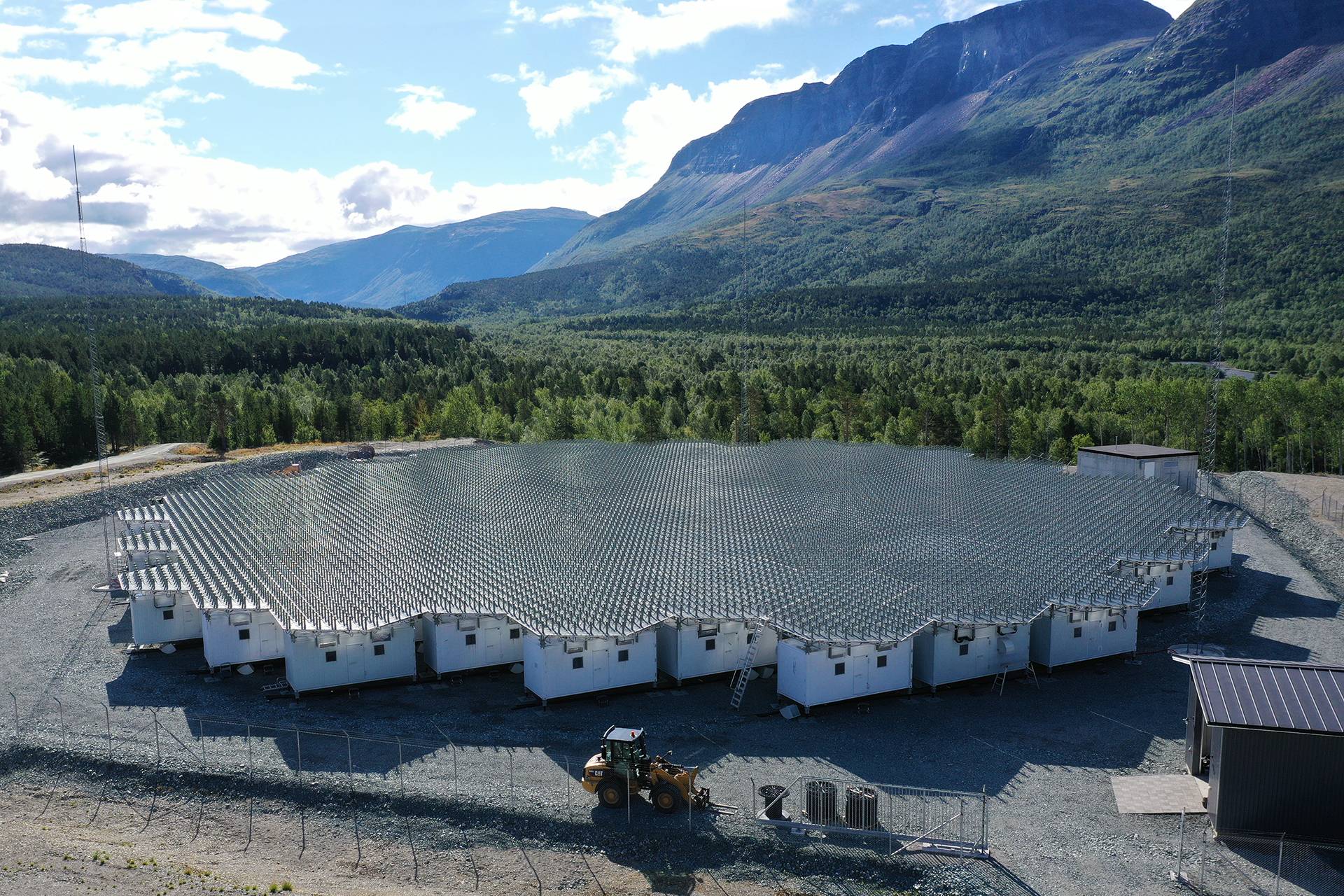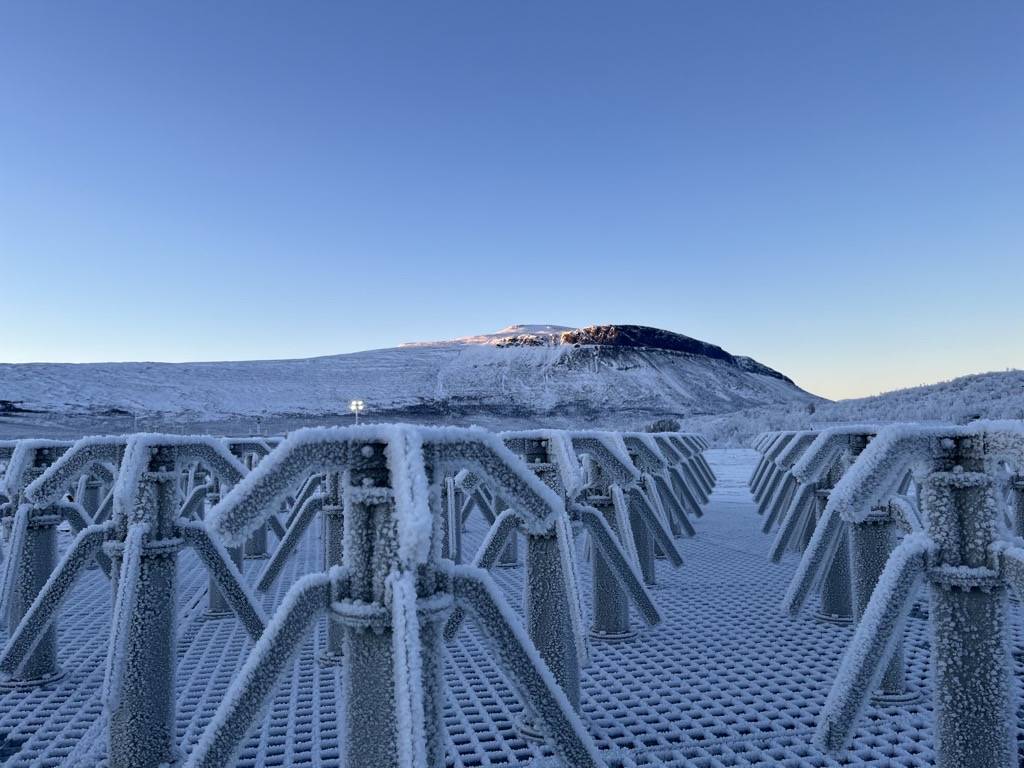Summary of information related to WP9
The major activity of this Work Package is the determination of the optimum number of outlying passive phased array antennas and their optimum localisation (antenna configuration) in order to fulfil the imaging (across-beam) spatial resolution criteria of the Aperture Synthesis Imaging Radar (ASIR) technique, which is a major innovation of the EISCAT_3D radars. Close coordination will be maintained with WP2, which covers site selection, in order that the size and geometry of the required sites will be well understood.
Operational software for interferometric image inversion based on the prototype software worked out in the framework of the EISCAT_3D Design Study and using extended simulations will be produced in this Work Package. The software will be employed in the evaluation of candidate antenna configurations. Evaluations will be made of methods other than the Maximum Entropy Method (MEM) for image inversion, feasibility of electron temperature imaging in the ionosphere, and beam coding to improve the matching between the transmitting and receiving patterns used for imaging. Possible impact on other Work Packages (such as the beam-forming aspects of WP7 and WP11) will be analysed. The number and localization of the outlying antennas have a decisive impact on the choice of site for the main radar station, with a consequent interplay of technical and financial issues.
This Work Package contains the following activities:
- Development of software for the simulation of incoherent scatter signals, so that imaging algorithms can be tested using different configurations of the antenna arrays.
- Evaluation of different algorithms for image inversion to be used in the aperture synthesis data analysis.
- Determination of the optimum number of outlying passive phased array antennas and their optimum localisation (antenna configuration) in order to fulfil the imaging (across-beam) spatial resolutions of the Aperture Synthesis Imaging Radar (ASIR) technique.
- Development of operational software for interferometric image inversion, and its employment in the evaluation of candidate antenna configurations.
- Beam matching of the transmitting and receiving phased array antennas.
In addition to the normal travel costs, the project plan includes a consultancy cost of 4 k€, to allow an external consultant to visit the University of Tromsø in order to work with the team developing the radar imaging applications.
Deliverables
Deliverable 10.1: Report on the study of outlying receiving site configurations
September 17, 2011
The high resolution in the horizontal plane that is desired for imaging purposes can be achieved by equipping radar sites with additional receiving points, so called outlying modules, far outside the core antenna. The task of optimal allocation of these outlying modules (outliers) depends, among other initial conditions, on the configuration and size of the core antenna field. Three layout schemes for outlying modules were considered in this report.

The simple double triangle configuration (shown above) appears to be more favorable, often demonstrating higher resolution than the other tested layouts.
Deliverable 10.2: Report on the results of the transmitting/receiving antenna beam matching
November 30, 2012
Antenna compression techniques for atmospheric/ionospheric radar applicationsare used to be able to transmit wide beams with all the available transmitted power.
In most of applications, such schemes should be accompanied by aperture synthesis imaging techniques that will allow resolving space and time ambiguities within the wider beams. Depending on the target of interest and system capabilities, one can apply binary phase coding or parabolic phase fronts.


Here are some specific recommendations or important points to consider for the EISCAT_3D:
- If the target of interest has long correlation times, then complementary binary phase coding could be used. Its practical implementations will depend on the actual antenna geometry used. If the EISCAT_3D transmitting antenna is a square array, then the same procedure used in Woodman and Chau [2001] can be implemented, if not, similar procedures need to be developed.
- Parabolic phase fronts are the most recommended procedure if the system allows phase changes with good precision. If the target of interest is very strong (more than 2-30 dB SNR) and small compare to the illuminated volume, then only phase changes are needed. On the other hand, if a very smooth wide beam is needed (e.g., for volume-filling type of targets, or weak targets), then amplitude modulation with good precision is needed on transmission.
- Fast changes in phase and amplitude are needed (from IPP to IPP) to allow changing the beam shape very rapidly.
- The maximum beam width that one can achieve will be limited by the minimum size of the antenna module that can have phase changes. For example in the case of Jicamarca, this minimum unit is a module consisting of 12×12 dipoles, then the maximum beamwidth that one can achieve is determined by the beamwidth of the module, i.e., ~8 degrees (HPBW).
Deliverable 10.3: Functional image inversion and visualisation software designed to work with data from the EISCAT_3D system
May 22, 2013
The problem of radar image inversion is multi-parametric, in most cases under-determined, thus strongly dependent on the quality of the input data. One of the best mathematically defined methods for image inversion is the Maximum Entropy Method (MEM).
The software described in this Deliverable is based on the software prototype developed in Work Package 5 of the FP6 Design Study implementing the MEM.
The software is available as a java package, and is accessible following this link (login required).
Deliverable 10.4: Final report on all activities performed in WP10
May 3, 2013
This report is a compilation of the activities of Work Package 10, Aperture Synthesis Radar.
The major activity of this Work Package is to determine the optimum number of outlying passive phased array antennas and their optimum antenna configuration in order to satisfy the imaging spatial resolution criteria of the Aperture Synthesis Imaging Radar (ASIR) technique.
The report goes through the conclusions of the different tasks in the Work Package:
- Task 10.1: Simulation software
- Task 10.2: Evaluation of inversion algorithms
- Task 10.3: Outlying receiving site configurations
- Task 10.4: Development of operational image inversion and visualisation software
- Task 10.5: Transmitting/receiving antenna beam matching
Milestones
Milestone 10.1: First version of the low-level simulation software available
February 23, 2011
In WP10, the possibility to recover images due to incoherent scattering radio signals is demonstrated. This is done, for instance, in order to synthesise images of the highly inhomogeneous distribution of electron density in an aurora across the radar beam. For this purpose, low level (receiver voltage) simulations of incoherent scatter signals is implemented and used for testing all the imaging software components. The production of the first version of this software is Milestone 10.1.

This Milestone was reached in February 2011.
Milestone 10.2: Preliminary evaluation of the different image inversion algorithms ready
February 23, 2011
The relevance and usefulness of the image inversion algorithm based on the MEM (Maximum Entropy Method) principle has already been shown, and a prototype software package was developed within the FP6 Design Study project. During the EISCAT_3D Preparatory Phase project other existing algorithms are evaluated using simulated data. Milestone 10.2 marks the end-point of the preliminary evaluation of the different image inversion algorithms.
This Milestone was reached in February 2011.
Milestone 10.3: Preliminary simulations for optimal outlying receiving site configurations completed
June 20, 2011
The choice of the optimal number and the localisation of the outlying passive phased arrays is a crucial element of the final specification of the imaging radar. This task is carried out using the simulation software produced, and the best inversion algorithm determined, in this Work Package.
The completion of the preliminary simulations for optimal outlying receiving site configurations, to be reported to Work Package 2 to complete the land requirements of the active site, is Milestone 10.3.

This Milestone was reached in April 2011.
Milestone 10.4: Simulations for optimal outlying receiving site configurations completed
September 22, 2011
The choice of the optimal number and the localisation of the outlying passive phased arrays that is needed for the desired high resolution in the horizontal plane, is a crucial element of the final specification of the imaging radar. The task to decide the configuration was carried out using the simulation software produced earlier in the project (Milestone 10.1) applying the best inversion algorithm that was determined earlier in the project (Milestone 10.2).
A report on the study of outlying receiving site configurations has been produced.
This Milestone was reached in August 2011.
Milestone 10.5: Final version of the low-level simulation software ready
April 10, 2012
In this Work Package, the possibility to recover images due to incoherent scattering radio signals is demonstrated. This is done, for instance, in order to synthesise images of the highly inhomogeneous distribution of electron density in an aurora across the radar beam. The task of simulating the incoherent scatter signal at arbitrary point in the ionosphere was considered earlier and reported as Milestone 10.1. To simulate the voltages at multiple receive sites we need to integrate the elementary scattering points over the volume illuminated by a transmitted pulse. An algorithm has been implemented for this and tested as a part of the operational software for image inversion and visualisation (Task 10.4).

This Milestone was reached in January 2012.
Milestone 10.6: Different image inversion algorithms evaluated and ranked
June 18, 2013
Radar image inversion implements techniques of processing that are largely nonlinear. There are infinite number of solutions due to limited (sparse) visibility data (large areas where sampling function is zero), and errors in the measurements themselves. The limited visibility plane coverage (sparse baselines) can be improved by deconvolution processes that allow the unmeasured visibility to take nonzero values within some general constraints on the image. There are two major methods to solve the under-determined problem of image inversion: The CLEAN algorithm and Maximum Entropy Method (MEM). Other techniques, like Capon and Non-Negative Least Squares (NNLS), were also considered during Task 10.2 of the EISCAT_3D Preparatory Phase.
A comparison of the methods (detailed in the final report of Work Package 10) ranked the algorithms as follows:
- MEM
- CLEAN
- Capon
- NNLS
The MEM method was determined to be the preferred one since it is most mathematically developed and works well with broad, smooth brightness distributions. In case of presence of point-like sources MEM and CLEAN methods should be combined. The Capon algorithm should be used in case of fast moving targets like satellites or space debris.
Finishing this comparison and ranking corresponds to Milestone 10.6 of the project, and this Milestone was reached in May 2012.
Attachments
Documents related to WP10 can be found in our external library.




